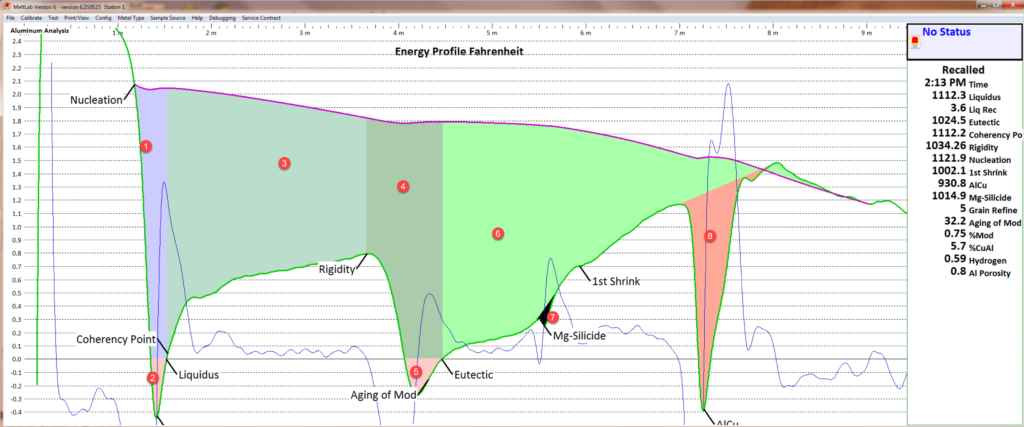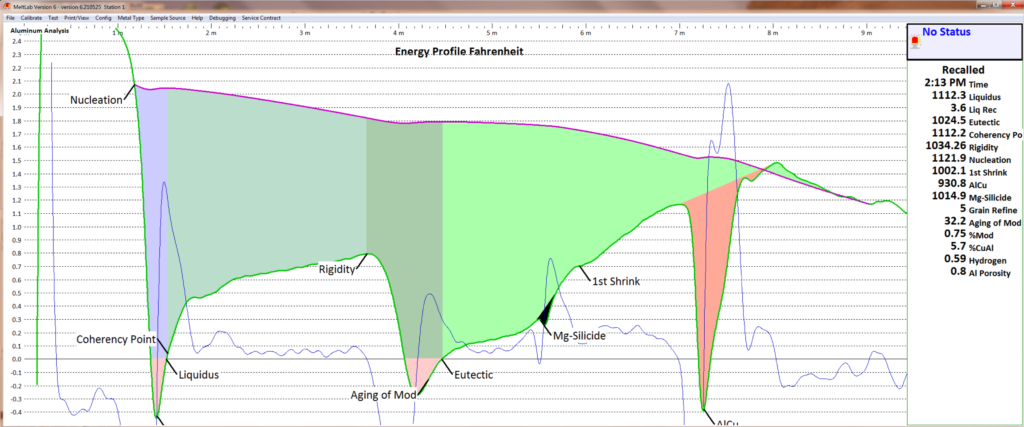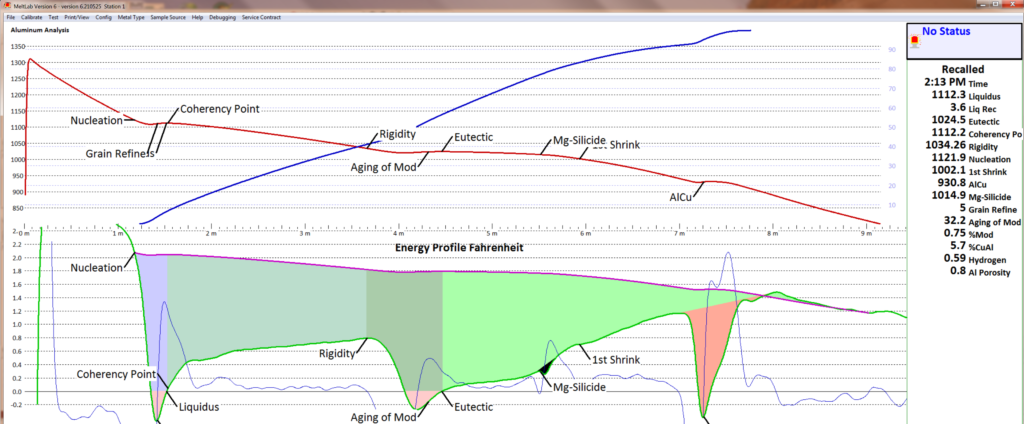The concept of zones of Solidification for Aluminum 319
We know different constituents percolate out at different stages in the solidification process. The energy generation of a phase offsets the cooling of the material and shows up on the cooling curve as discrete zones. There are also small temperature changes that can signal things like Al2Cu2 formation or Mag-Silicide or shrinkage.
By using physics and metallurgy, these zones can be identified. Using math, these areas can be measured for a better control of our castings. The curve below has 8 major zones of interest. The bumps in the curve in area 3 to the left of the Rigidity point are hydrogen gas or beta and Pi crystals and will be discussed elsewhere.

- This is the primary liquidus area where dendrites are rapidly growing and includes area 2. This curve is 319 Aluminum, and could use some grain refinement. The Liquidus is late forming and shows significant undercooling.
- This is the area of liquidus recalescence, an indication of a low level of grain refinement.
- This is the area of further dendrite growth and thickening. During this stage both hydrogen gas bubbles form and the iron aluminum phases of Beta and Pi form.
- This is the main area of eutectic growth and includes area 5.
- This is the area of recalescence and shows information on modification. The area indicates how modified it is. The slope out of the modification shows the aging of the modification.
- This is the growth of the Aluminum eutectic. During this time feeding becomes restricted, Mag-silicide forms, micro-porosity forms, and we have possible shrinkage voids forming.
- This is the actual Mag-silicide arrest. There are two closely related forms of MgSi so there are sometimes overlapping arrests in this area. Because the MgSi arrest is present, we would call this alloy 319 modified. MgSi helps with iron issues making more Chinese script and less beta crystals.
- This is the Aluminum-copper phase coming out in the grain boundaries.
Cooling curve and complete curve for 319 type Aluminum
Click HERE to return to Aluminum



